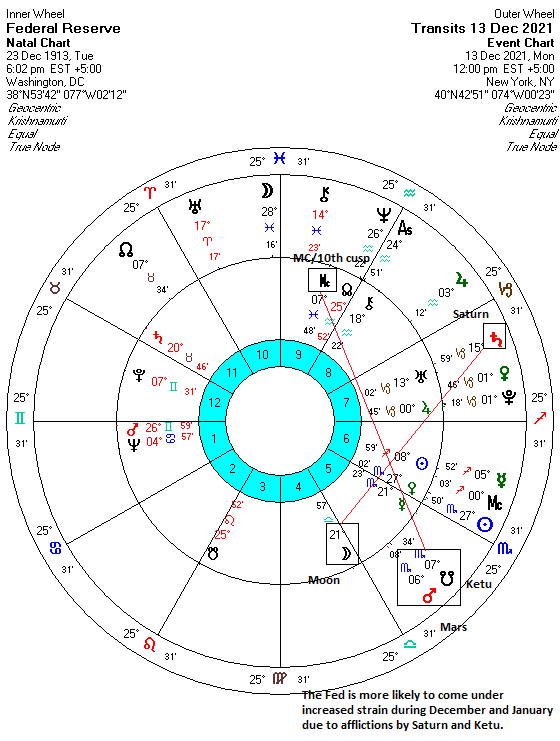 (3 November 2021) Fed Chair Jerome Powell delivered another bravura performance today as he finally announced the Fed would begin to taper its emergency QE asset purchases in November. Stock markets cheered the long-awaited tapering as Powell was careful to note that any interest rate increases would only occur if labor markets showed further improvement. In other words, Powell’s initial act of monetary tightening in this cycle was about as dovish as one could imagine.
(3 November 2021) Fed Chair Jerome Powell delivered another bravura performance today as he finally announced the Fed would begin to taper its emergency QE asset purchases in November. Stock markets cheered the long-awaited tapering as Powell was careful to note that any interest rate increases would only occur if labor markets showed further improvement. In other words, Powell’s initial act of monetary tightening in this cycle was about as dovish as one could imagine.
Powell continued to insist that inflation was transitory due to supply chain bottlenecks rather than excessive stimulus although he did acknowledge that inflation would remain high well into 2022. This fervent belief in transitory inflation was music to the ears of investors since it means that any actual rate hikes are still some ways off. Markets have come to rely near-zero interest rates since companies can borrow at rock-bottom interest rates in order to buy their own shares back which, in turn, drives up share prices. It also reduces borrowing costs for consumers.
One wonders how long the Fed can keep the stock market afloat despite rising inflation and more signs of slowing growth. The Fed may well choose to continue its dovish approach until the bond market forces its hand. The Fed wants to keep yields as low as possible in order to keep the current asset bubble from bursting. But if inflation continues to trend higher bond yields would also rise further as buyers demand a higher premium. Key levels to watch may be 0.75% on the 2-year note and perhaps 2% on the 10-year, although it is unknown just where the pivotal thresholds may lie.
But if Powell falls far behind the yield curve, he may not be able to resist the pressure to raise rates. On the other hand, it may be that Powell is willing to accept a lot more inflation than he is letting on in order to keep the wealth-generating effects of the stock market rally going as long as possible.

The horoscope of the Federal Reserve can offer clues about when the economy is more likely to experience significant headwinds. Planetary afflictions to the chart usually occur during times of distress, such as during the initial Covid panic in March 2020 when transiting Ketu (South Lunar Node) was conjunct the natal Sun at 8 Sagittarius and Saturn and Pluto were conjunct Jupiter at 0 Capricorn.
The next noteworthy affliction could come as soon as December as Ketu and Mars conjoin and form a 120 degree aspect to the MC (i.e. the 10th house cusp) while Saturn forms a tighter square to the natal Moon within just six degrees of orb. The Ketu and Mars influence on the 10th house of status symbolizes sudden events that upset or undermine the reputation and authority of the Fed. The ongoing Saturn aspect to the Moon suggests disappointment and loss, as if policy aims will fail to deliver their promise. We should also note that Saturn’s difficult square aspect to the Moon will continue into January and February 2022 when it is exact.
And to introduce another layer of uncertainty, Venus turns retrograde on December 19. As the planet of value and harmony, Venus retrograde periods should be treated with some caution as prevailing notions of value and worth become subject to change. Venus will be retrograde from December 19 until January 29.
It is important to note that these planetary pressures could represent either higher levels of inflation that forces the Fed to act or it may also signify a slowdown. With recent GDP data showing a rapid cooling of the economy since the summer, some analysts have suggested that the Fed may be on the verge of a policy mistake by tightening (tapering) while the economy is slowing. Therefore, these potential December troubles could just as easily represent higher inflation or a rapid slowdown. Either way, the Fed is likely to feel the heat as markets may become more vulnerable.
Weekly Market Forecast
US stocks rallied to new all-time highs today as Powell’s dovish taper announcement put an end to the uncertainty. I had thought we might have seen a bit volatility this week given the Mars-Ketu alignment, particularly since this activated key points in the Nasdaq horoscope quite closely as I noted in last week’s post. Thus far, the volatility has been a no-show, although I would note that the Mars-Ketu alignment is still within range, albeit in a weaker state, for the rest of the week.
Troublesome Mars will remain in focus as we head into next week. Mars forms an exact contraparallel in latitude with unpredictable Uranus on Friday — just in time for the US jobs report. Then the outlook becomes even more uncertain next week as Mars conjoins Mercury and both will be simultaneously squared by Saturn. It’s hard to see how stocks don’t decline on this pattern, although there are no certainties in astrology as we know. Nonetheless, the next several days warrant some caution.
For more details,
You can be notified of new posts if you follow ModernVedAstro on Twitter.
Please note that this is a more general and much abbreviated free version of my
investor newsletter which can be subscribed to here.
Please read my Disclaimer
Market forecast for week of 25 October 2021
Market forecast for week of 18 October 2021
Market forecast for week of 11 October 2021
Market forecast for week of 4 October 2021
Market forecast for week of 27 September 2021
Market forecast for week of 20 September 2021
Market forecast for week of 13 September 2021
Market forecast for week of 6 September 2021
Market forecast for week of 30 August 2021
Market forecast for week of 23 August 2021
Market forecast for week of 16 August 2021
Market forecast for week of 9 August 2021
Market forecast for week of 2 August 2021
Market forecast for week of 26 July 2021
Market forecast for week of 19 July 2021
Market forecast for week of 12 July 2021
Market forecast for week of 5 July 2021
Market forecast for week of 28 June 2021
Market forecast for week of 21 June 2021
Market forecast for week of 14 June 2021


